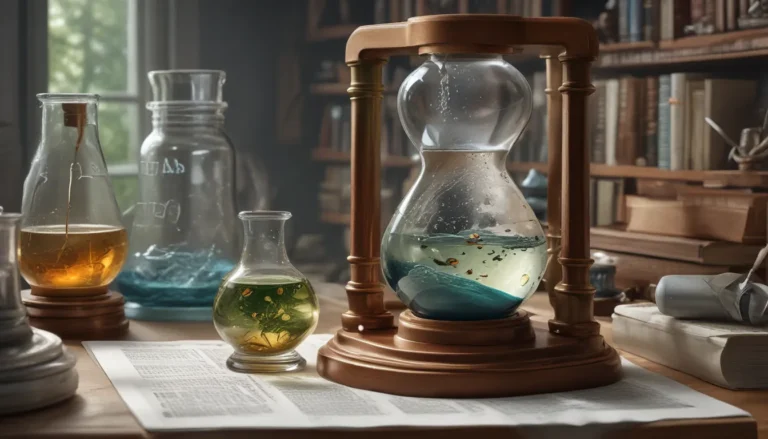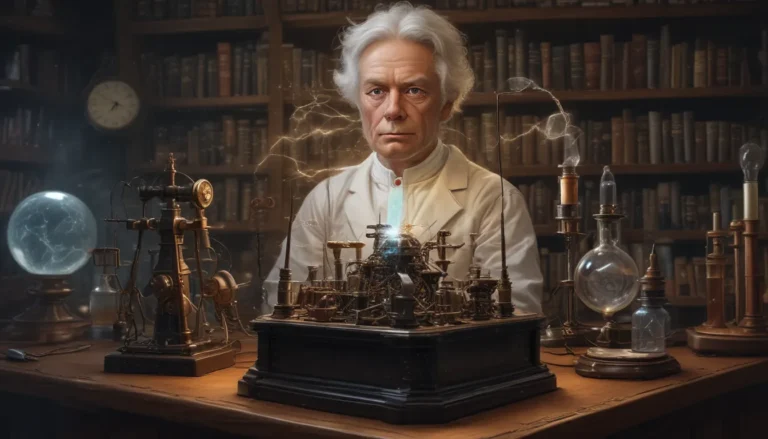A Note About Images: The images used in our articles are for illustration purposes only and may not exactly match the content. They are meant to engage readers, but the text should be relied upon for accurate information.
Have you ever wondered about the secrets that govern the behavior of gases? Dive into the captivating world of physics and explore one of its fundamental laws – Charles’s Law of Volumes. Named after the insightful French scientist Jacques Charles, this law unveils the intriguing relationship between the volume and temperature of gases at a constant pressure. Join us on a journey as we unravel 17 astonishing facts about Charles’s Law, revealing its significance and practical applications in various fields.
Understanding Charles’s Law
- Charles’s Law, also known as the law of volumes, describes how the volume of a gas changes with temperature, assuming the pressure remains constant.
- Alongside Boyle’s Law and Gay-Lussac’s Law, Charles’s Law forms the foundation of the ideal gas law equation, which elucidates the interplay between pressure, volume, and temperature of gases.
- Mathematically expressed as V1 / T1 = V2 / T2, this formula showcases the initial and final volumes and temperatures of gases, respectively.
Applications of Charles’s Law
- Charles’s Law finds applications in diverse fields such as chemistry, physics, and engineering, aiding in the study of gas behavior, the design of heating and cooling systems, and the analysis of engine performance.
- The law is crucial in comprehending the behavior of gases in weather systems, impacting the formation of weather patterns and atmospheric phenomena.
Insight into Gas Behavior
- Visualize the relationship between volume and temperature in gases through a graph, demonstrating a linear correlation as temperature increases.
- Charles’s Law can anticipate gas behavior across varied temperature ranges, aiding scientists and engineers in predicting volume changes with temperature variations.
Practical Implications
- Compressors and refrigeration systems harness Charles’s Law principles to refrigerate and compress gases, a vital component in cooling technology.
- Experimentally testing Charles’s Law using a gas syringe enables direct verification of the relationship between gas volume and temperature.
Beyond Gases
- While Charles’s Law focuses on gases, similar principles govern the behavior of liquids and solids, highlighting volume changes with temperature shifts.
- Dive into the realm of thermodynamics, where Charles’s Law plays a pivotal role in understanding energy transfer and the properties of matter.
Conclusion: Unveiling the Beauty of Nature’s Laws
Charles’s Law of Volumes stands as a cornerstone in unraveling the intricate behavior of gases. From its historical discovery by Jacques Charles to its practical applications in diverse fields, this law continues to inspire curiosity and scientific progress. By delving into the nuances of Charles’s Law, scientists and engineers craft innovative solutions, optimize processes, and make accurate predictions, showcasing the enduring beauty and fascination of natural laws.
FAQs: Delving Deeper into Charles’s Law
-
What is Charles’s Law of Volumes?
Charles’s Law states that the volume of a gas is directly proportional to its temperature, assuming constant pressure. -
Who discovered Charles’s Law?
French scientist Jacques Charles discovered this law in the late 18th century, unveiling the relationship between gas volume and temperature. -
How does Charles’s Law relate to gas behavior?
Charles’s Law explains how gases respond to temperature changes, elucidating the direct correlation between temperature and volume. -
What are the practical implications of Charles’s Law?
Understanding Charles’s Law is instrumental in engineering, weather prediction, and designing efficient systems that respond to temperature variations. -
Can Charles’s Law be applied to all gases?
While ideal gases closely adhere to Charles’s Law, real gases deviate at high pressures and low temperatures, impacting the law’s accuracy. -
What is absolute zero?
Absolute zero marks the theoretical point at which gases cease to have volume or molecular motion, typically defined as -273.15 degrees Celsius or 0 Kelvin. -
How is Charles’s Law represented mathematically?
Mathematically, Charles’s Law is represented as V/T = k, showcasing the direct correlation between gas volume and temperature. -
Can Charles’s Law apply to liquids or solids?
No, Charles’s Law specifically pertains to gases, with liquids and solids following distinct principles of behavior.
Embark on a captivating journey through the realm of Charles’s Law, where each fact reveals a new facet of the intriguing world of gas behavior. Explore the vast implications of this fundamental law and witness how it shapes our understanding of the universe, from the microscopic to the cosmic. Join us in unraveling the mysteries of nature’s laws and embracing the beauty of scientific exploration.






